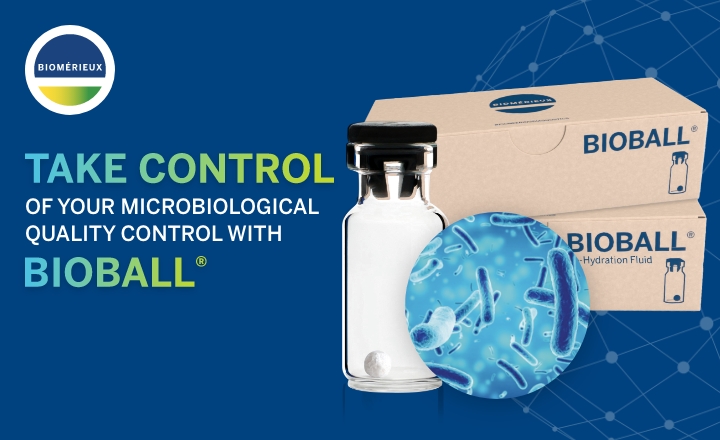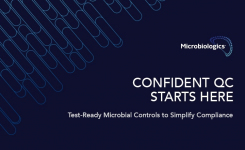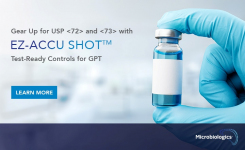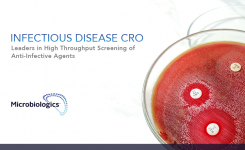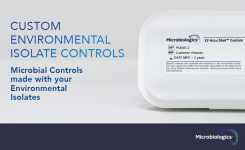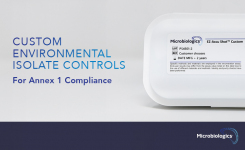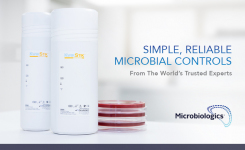
by Laurie Kundrat, Technical Specialist, Microbiologics, Inc., USA
In 2015 the U.S. Pharmacopeia (USP) updated USP <51> Antimicrobial Effectiveness Testing. Microbiologics has created a list of frequently asked questions and answers to assist our customers in understanding the new USP <51> guidelines.
Q: What has changed? A: In addition to the Antimicrobial Effectiveness Test, laboratories now need to perform the growth promotion test on each batch of ready-prepared medium and each batch of medium prepared either from dehydrated medium, or from the ingredients described in the USP. Laboratories also need to perform the suitability test to confirm microorganisms can be recovered from the product if they are present.
Q: Which microorganism strains do I need for the test? A: Escherichia coli, derived from ATCC® 8739™ * Pseudomonas aeruginosa, derived from ATCC® 9027™ * Staphylococcus aureus, derived from ATCC® 6538™ * Candida albicans, derived from ATCC® 10231™ * Aspergillus brasiliensis, derived from ATCC® 16404™ *
Q: How should I prepare the strains? A: Use either standardized suspensions (e.g. enumerated lyophilized or frozen preparations) or prepare suspensions from freshly growing colonies on agar plates.
Q: Is the Growth Promotion Test in Chapter <51> similar to the Growth Promotion Test described in Chapter <61> Microbial Enumeration Tests? A: Yes, they are similar. Inoculate new batches of media with a small number of microorganisms (e.g. ≤100 CFU), incubate, and examine the results.
In the case of solid media, counts obtained must be within a factor of two of the calculated value for a standardized inoculum. If the inoculum for the standardized suspension has a value of <100 CFU, its value can be determined by counting the colonies after incubation. For freshly prepared suspensions, the number of colonies on new batches of media should be within a factor of two of the previously approved batch of medium.
In the case of liquid media, the turbidity in the new batch of media should be comparable to the turbidity in the previously approved batch.
The easiest way to determine if a new batch is acceptable is to test the new batch of media in parallel with the previously approved batch. The same microorganism suspension should be used for both batches.
Q: Why is the Suitability of the Counting Method needed? A: The purpose of this test is to determine if your test method is capable of recovering microorganisms from a product. Antimicrobials in the product may inhibit recovery.
To perform the test, prepare a 1:10, 1:100, and 1:1000 dilution of the product. Add a small number of organisms to each dilution so that, when delivered by pipette, the number of CFU recovered on agar will ideally be between 25 and 250 in the case of bacteria and yeast. Since Aspergillus brasiliensis spreads, the number of CFU for this organism should be between 8 and 80. At the same time the product is tested, run a saline control in parallel. The saline control is inoculated with the same amount of the same microorganism suspension as the product.
Compare recovery of the microorganism in the product to the microorganism in saline. If recovery is not within 50%, the antimicrobial will need to be neutralized. Information about neutralization can be found in USP chapters <61> and <1227> Validation of Microbial Recovery from Pharmacopeial Articles.
Q: How many CFU should I add to my product for the Antimicrobial Effectiveness Test? A: You will need to add enough microorganisms so that the CFU concentration in your product is between 105 and 106 CFU per ml. Keep in mind that the inoculum must only be 0.5% to 1% of the product volume being tested.
Q: How do I determine the concentration of test microorganisms that is added to the product? A: You must test the microorganism suspension from which you drew your inoculum. You should not test the product because the antimicrobial may immediately kill some of the microorganisms.
Use a nonselective agar such as Tryptic Soy Agar to test the microorganism suspension. Since the CFU concentration of the inoculum is very high, you will need to serially dilute the suspension in order to get a countable number of colonies on your agar plate.
Please contact the Microbiologics Technical Support team with additional questions: 866-286-6691 or techsupport@microbiologics.com






